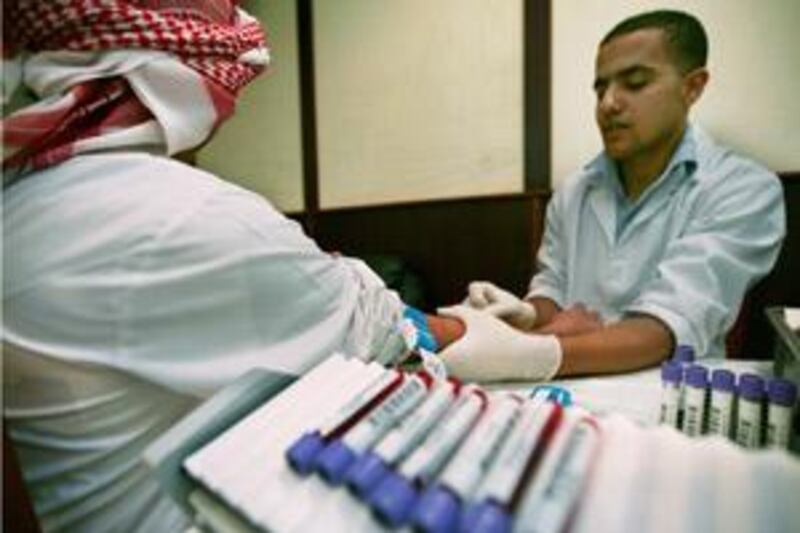British scientists claim to have made a breakthrough in the monitoring of thalassaemia with a new scanning technique, which they say cuts mortality rates by 71 per cent. Thalassaemia, a blood disease that involves defects in haemoglobin production, is one of the world's most common genetic disorders. The frequency of necessary blood transfusions causes a dangerous build-up of iron in the heart. Seventy per cent of thalassaemia sufferers die of heart failure. The new scanning technology, called T2, involves the use of cardiovascular magnetic resonance, which tracks iron levels more accurately than the biopsies and blood tests that patients have had to rely on in the past.
"It is the first time we have been able to track the risk of heart failure," says Professor Dudley Pennell, the leader of the study and the director of the National Institute for Health Research cardiovascular unit at Royal Brompton Hospital in London. "This is a major breakthrough for thalassaemia patients and will completely change the way the disease is managed."
Mothers of newborn babies know only too well the convenience of pumping breast milk during the day to use at night. But, according to a study carried out by the University of Extremadura in Badajoz, Spain, nucleotides, the naturally occurring chemicals that have previously been linked to sleepiness, are at their highest in breast milk at night. "It is a mistake for the mother to express the milk at a certain time and then store it and feed it to the baby at a different time," says Cristina Sánchez, who carried out the research with colleagues. Researchers looked at the concentrations of the nucleotides most strongly associated with sleep in the breast milk of 30 breastfeeding mothers, and found that their concentration increased during the night. A separate study has been investigating whether nucleotides could be added to formula milk.
The days of being forced to listen to other people's playlists could be coming to an end in Europe: the European Commission wants to introduce safety features on personal music players that will cause them to default to a safe sound level and, if ignored, warn users of the dangers of loud music. If approved, the measures could be applied throughout the European Union by 2011.
Cenelec, a consumer safety organisation, has been commissioned to draw up safety standards following a report carried out by the EU's scientific committee on emerging health risks. It reported that between five and 10 per cent of people using personal music players set the volume at levels the World Health Organisation deem high enough to cause permanent damage if listened to for more than an hour a day for five years.
The United Nations has cited a significant rise in the detection and treatment of HIV and Aids in the developing world in its 2009 progress report, according to The New York Times. Not only did the number of people being tested for HIV more than double in dozens of countries, but the amount of people taking antiretroviral drugs also rose by more than a million, and the number of mothers receiving medicine to prevent infecting their babies with HIV rose to more than half those in need in some parts of Africa.
"In the space of one year, you're seeing a huge ramping up of Aids services," said Mark Stirling, the regional director for the UN's efforts against Aids in eastern and southern Africa. "It's unprecedented. In the acceleration and intensification of reach, 2008 was an extraordinary year." Nevertheless, experts say fewer than half those needing drugs in South Africa - which has more HIV-positive citizens than any other nation - are getting them.
It has long been the bane of biomedical engineering, but an Indian doctor has developed a viable, safe and affordable artificial heart inspired by the anatomy of a cockroach, says a report in The Times. Sujoy Guha, a biomedical engineer at the Indian Institute of Technology in Kharagpur, has succeeded where many others have failed because, he says, he didn't attempt to mimic the real thing. The human heart has four chambers, while a cockroach's has 13. Guha's prosthetic version has five, but, like the insect's, it builds pressure in stages.
Made of plastic and titanium and run on batteries that can be recharged outside the body, it costs about £1,500 (Dh8,784). The two artificial hearts currently available in the US cost at least £50,000 (Dh293,000), and leave the patient susceptible to infection and strokes.





